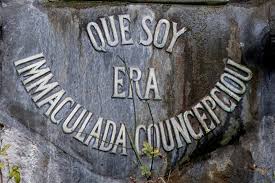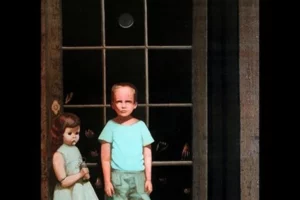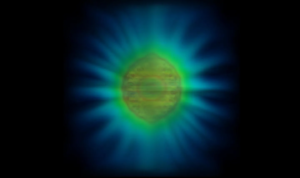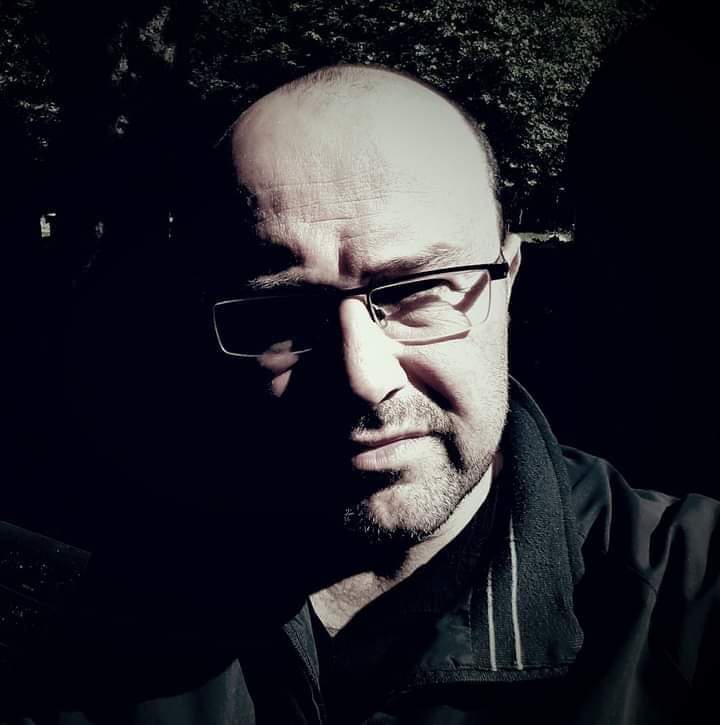

Quante volte abbiamo sentito parlare di storie di fantasmi, di Poltergeist o di qualunque altro fenomeno legato al mondo del paranormale? Sicuramente tante volte, un pò per via di storie tramandateci, un pò dalla filmografia o dai romanzi. Questi fenomeni sono reali o sono frutto di scherzi di cattivo gusto? Perché esistono questi fenomeni e perché si manifestano apparentemente senza alcun motivo?
Per alcuni aspetti, un fenomeno affascinante che reputo di dover affrontare in questa sede é il fenomeno del Poltergeist, e lo faremo con il signor Darren W.Ritson, ricercatore e membro della Society for Psychical Research.
Presentazioni.
Simone Leoni: Signor Ritson grazie per questa intervista. Si può presentare ai nostri lettori? Chi é Darren Ritson e cosa fa nella vita?
Darren W.Ritson: Darren W Ritson è un investigatore di poltergeist, cacciatore di fantasmi e autore di quasi 20 libri sull’argomento dei fenomeni paranormali. È noto soprattutto per la sua indagine del 2006 e il successivo libro su quello che è diventato noto in molti paesi come il poltergeist di South Shields.
Dopo aver vissuto un incidente di poltergeist “una tantum” a Dieppe, in Francia, nel 1986, in cui un comodino si gettò dall’altra parte della stanza in cui alloggiava, decise che il paranormale, ma più specificamente i poltergeist, era qualcosa che voleva imparare .
Darren è un membro della Society for Psychical Research fondata nel 1882, ora ha 50 anni ed è cintura nera di Judo.
Il suo ultimo libro, Poltergeist Parallels and Contagion (White Crow Books, 2021, Londra), che è uno studio sulla natura “potenziale” del poltergeist, è stato recentemente pubblicato.
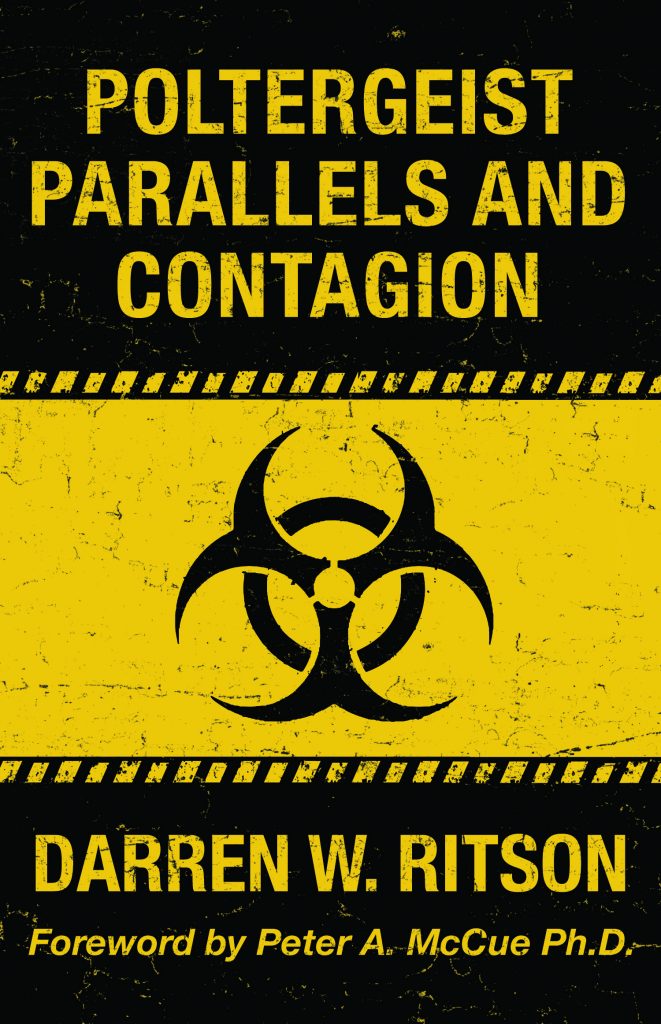
Il termine Poltergeist.
Simone Leoni: Tu principalmente ti occupi dei fenomeni Poltergeist. Cosa significa questo termine e da dove deriva?
Darren W.Ritson: La parola “poltergeist” è un’antica parola tedesca. Polter, o poltern significa essere rumoroso, bussare o generalmente essere chiassoso. Geist, significa “fantasma”. Quindi fantasma rumoroso.
Sebbene molti dibattiti infuriano sull’effettiva vera natura del poltergeist con alcuni argomentazioni, può essere spiegato come un’attività psichica nota come RSPK (psicocinesi spontanea ricorrente). Nonostante questo, la vecchia parola tedesca è rimasta.
Simone Leoni: Ci sono resoconti di cronache passate dove i Poltergeist hanno agito seguendo uno schema ben preciso?
Darren W.Ritson: Sì, in effetti la maggior parte dei poltergeist genuini segue “modelli” sebbene non tutti i poltergeist facciano le stesse cose.
In genere possono essere identificati come poltergeist attraverso questi schemi e sebbene i casi possano variare in una certa misura poiché nessun poltergeist è esattamente lo stesso, la maggior parte sono piuttosto standard.
In realtà, è stato notato che alcuni poltergeist in molti casi diversi mostrano fenomeni così specifici e così sorprendentemente simili che è stato suggerito che lo stesso poltergeist potrebbe effettivamente essere al lavoro invece di essere “molti” poltergeist (Ritson, 2020).
Una teoria?
Simone Leoni: C’è sempre una cosa che mi ha incuriosito. Si dice che il fenomeno Poltergeist abbia un nesso con l’adolescenza e l’avvento del ciclo mestruale. C’è un fondo di verità, o questa é una teoria priva di fondamento?
Darren W.Ritson: Sì, c’è da tempo un’associazione con i poltergeist con adolescenti (di solito donne) e ci sono molti esempi di questo: Enfield (1977-9), Battersea (1956-1968) Sauchie (1960), Runcorn (1952), Pontefract (1966 ), Epworth Rectory (1716-7), Rosenheim (1967) Eleonore Zugun (1925) l’elenco potrebbe continuare…
tuttavia, non è sempre il caso che una giovane femmina sia presente durante le epidemie di poltergeist.
Ci sono infatti casi documentati in cui non ci sono stati bambini nella casa infetta, lasciando gli investigatori perplessi su chi potrebbe essere la persona di riferimento: Cardiff (1989-91), Hertfordshire (1991-96), South Shields (2005-6 ), The Drummer of Tedworth (1662).
Tuttavia, se non è un adolescente pubescente, è probabile che la persona focale possa essere un adulto. Tutto ciò potrebbe dipendere dal suo stato d’animo emotivo/mentale, come sarebbe ovviamente nel caso di un giovane.
Sebbene sia una convinzione molto diffusa da molti, questa è comunque, a mio avviso, ancora una congettura, poiché fino ad oggi nulla è stato “scolpito nella pietra” con altre alternative e idee sulla natura del poltergeist che sono state dibattute ferocemente.
Con il mio caso a South Shields nel 2006, il giovane in casa aveva solo tre anni all’epoca e alla fine lo escludemmo come “obiettivo”. Quindi, anche se molti poltergeist normalmente seguono questa regola del “giovane adolescente”, non è sempre così. Niente è semplice nella ricerca poltergeist.
Simone Leoni: Esiste una casistica di questi casi?
Darren W.Ritson: Vedi domanda 4.
Poltergeist e fantasmi sono la stessa cosa?
Simone Leoni: In cosa si differenzia il Poltergeist dalle classifiche manifestazioni spettrali?
Darren W.Ritson: C’è una linea sottile tra i casi noti come “casi di poltergeist” e “casi di infestazione”. Molti dei fenomeni riportati possono sembrare molto simili nell’aspetto, ma è possibile individuare differenze se si sa cosa cercare.
Per cominciare, i poltergeist hanno generalmente vita breve, da poche settimane a forse qualche mese, anche se ci sono eccezioni a questa regola in cui la loro durata può superare un anno o due (South Shields, Enfield, Hertfordshire, San Pedro, ecc.) mentre i casi di infestazione possono durare per molti anni, decenni o addirittura secoli.
Fenomeni fisici riportati in casi di infestazione come il movimento di oggetti, l’apertura e la chiusura di porte ecc.
Possono essere notati anche in casi di poltergeist, allo stesso modo le apparizioni che a volte (ma non sempre) arrivano con casi di poltergeist sono solitamente un aspetto dei “casi di infestazione”.
Immagino che il modo per differenziare tra i tipi di casi sia identificare i modelli noti e i tipi di fenomeni che derivano da questi tipi di infestazioni.
I Poltergeist sembrano seguire determinate regole/percorsi/modelli, e se osservi abbastanza dell’attività puoi determinare con quale tipo di fenomeno hai a che fare. Normalmente, puoi avere una buona idea di cosa potrebbe essere nella fase del colloquio dell’indagine. Segue quindi l’osservazione sul posto che offre all’investigatore l’opportunità di confermare o negare la sua causa sospetta originale.
Simone Leoni: Lei che posizione prende di fronte questi temi? Scettico o non scettico?
Darren W.Ritson: Quando si tratta del fenomeno del poltergeist in generale, sono convinto al 100% della sua esistenza semplicemente a causa del mio coinvolgimento in una serie di casi su cui ho indagato, incluso il suddetto South Shields.
Quello che ho visto in quel caso mi ha convinto al di là di ogni dubbio che il fenomeno è reale… punto. Non ho problemi a dirlo.
Sono davvero scettico, tuttavia, quando si tratta di affermare di avere una casa infestata, cioè fino a quando non si presentano prove o prove sufficienti per indicare il contrario.
Ero scettico nel mio approccio al caso South Shields e sebbene questo caso si sia rivelato quello che mi ha convinto che il fenomeno è reale, dobbiamo essere consapevoli che ogni caso è nuovo.
Un sano scetticismo è un requisito durante l’indagine su queste affermazioni, ma è giusto dire che deve anche accompagnare una “mente aperta”. Sii scettico nei confronti delle persone, non del poltergeist.
Un caso molto particolare.
Simone Leoni: C’è un caso particolare che lei ha indagato e reputa opportuno raccontarci?
Darren W.Ritson: Sì, The South Shields Poltergeist (2005-6). Ho indagato su molti focolai notevoli di poltergeist, ma nulla si avvicina al caso South Shields Poltergeist.
Alla fine del 2005 e per la maggior parte del 2006, nella piccola città costiera di South Shields a Tyne and Wear, nel nord-est dell’Inghilterra, nel Regno Unito, un poltergeist piuttosto feroce e intenso è esploso in una piccola casa con due camere da letto di proprietà privata.
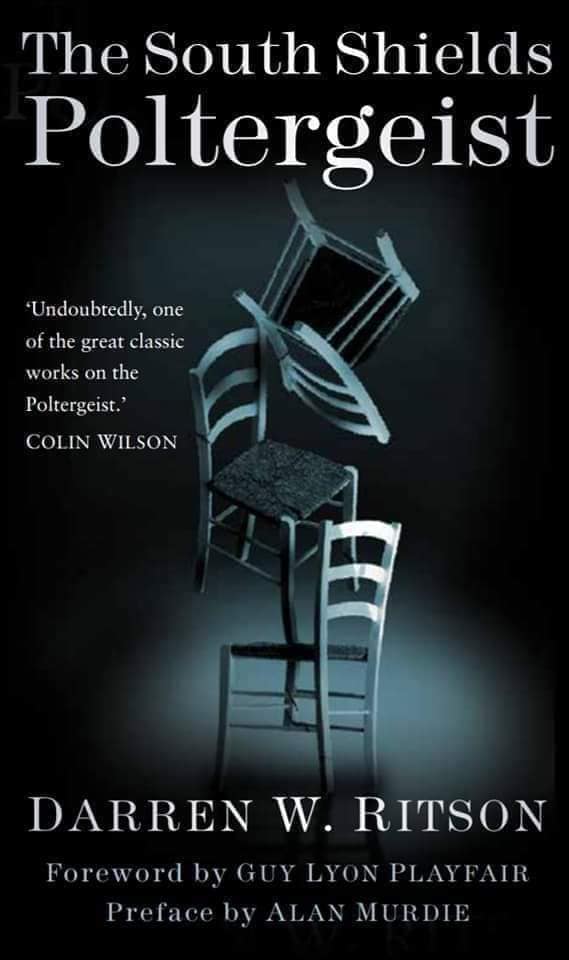
Questo focolaio di poltergeist, che è successivamente diventato uno dei casi più familiari nella storia recente, è noto come South Shields Poltergeist ed è stato riconosciuto nel Regno Unito come uno dei casi più significativi degli ultimi cinque decenni.
Durante questa epidemia il poltergeist ha eseguito ed eseguito una vasta gamma di fenomeni strabilianti che hanno terrorizzato i proprietari di case e hanno fatto sì che io e il mio co-investigatore (Michael J. Hallowell) ci chiedessimo con cosa diavolo avessimo a che fare.
Sono stati registrati e documentati casi di penetrazione di materia attraverso la materia in cui oggetti solidi passano attraverso altri oggetti solidi, coltelli da intaglio di otto pollici sono stati lanciati in giro per la casa da una mano invisibile mancava per poco i capifamiglia, si sono sentiti colpi fragorosi, monete che apparentemente si sono materializzate a mezz’aria pioveva sulle persone.
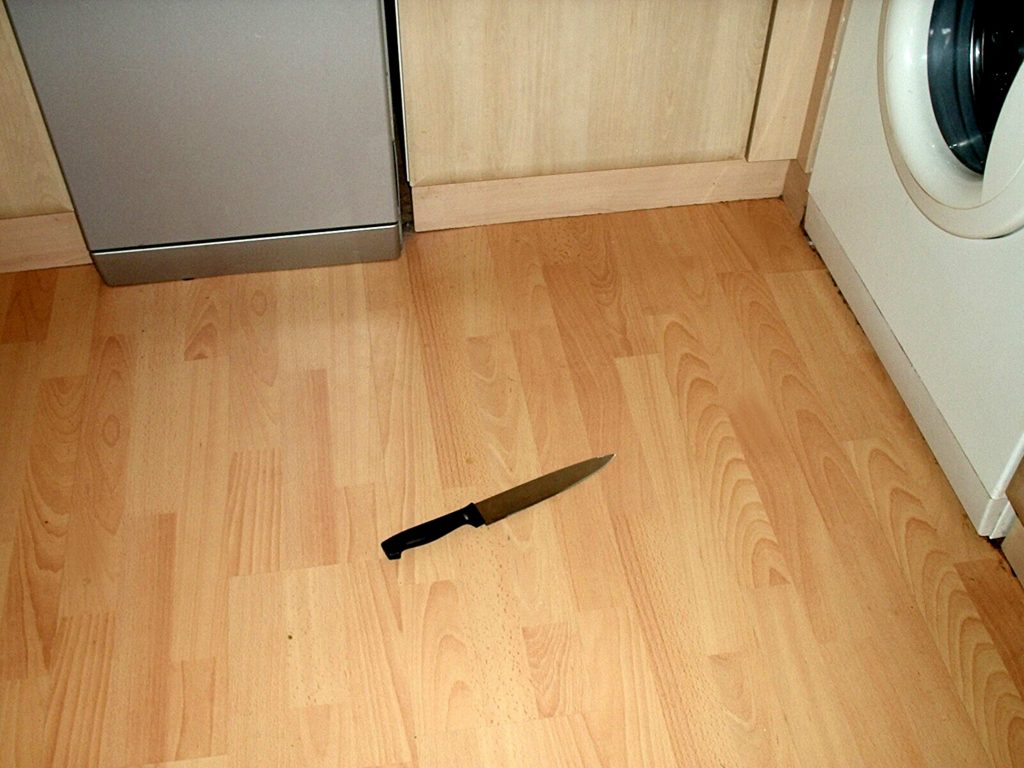
I giocattoli hanno preso vita parlandoci, i messaggi sono stati lasciati per noi su “scarabocchi”, il gabinetto si è riempito di una sostanza che sembrava sangue, le apparizioni sono state viste all’interno della casa, i mobili si sono spostati da soli, le sculture sono state create con tavoli e sedie (e peluche e coltelli), e in alcune occasioni ribaltava completamente le camere da letto facendole sembrare come se fosse stata colpita una bomba.
Il libro.
Il libro South Shields Poltergeist (Ritson, 2020) è dedicato all’intero caso e per scoprire la storia completa è necessario consultarlo. È disponibile per l’acquisto su Amazon.
Si dice che il caso sia di gran lunga uno dei migliori casi di poltergeist mai documentati e che sia stato vissuto da così tanti testimoni indipendenti.
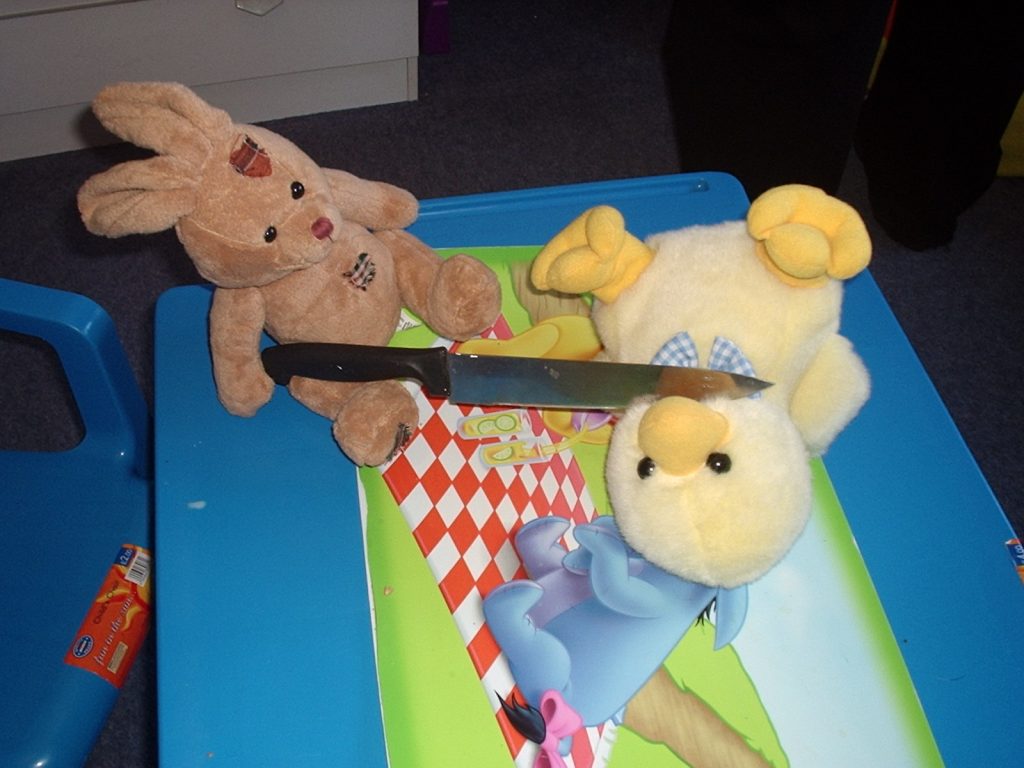
Nel 2008 nel Regno Unito, il caso South Shields ha fatto notizia a livello locale e nazionale. Ha persino fatto notizia a livello internazionale fino agli Stati Uniti e all’Australia. Va notato, tuttavia, che la famiglia in questione rimane sotto il mantello dell’anonimato e lo fa da oltre quindici anni.
Da quando l’infestazione è finita, non hanno parlato ai media del caso e hanno rifiutato tutte le offerte di qualsiasi altro coinvolgimento dei media fino ad oggi.
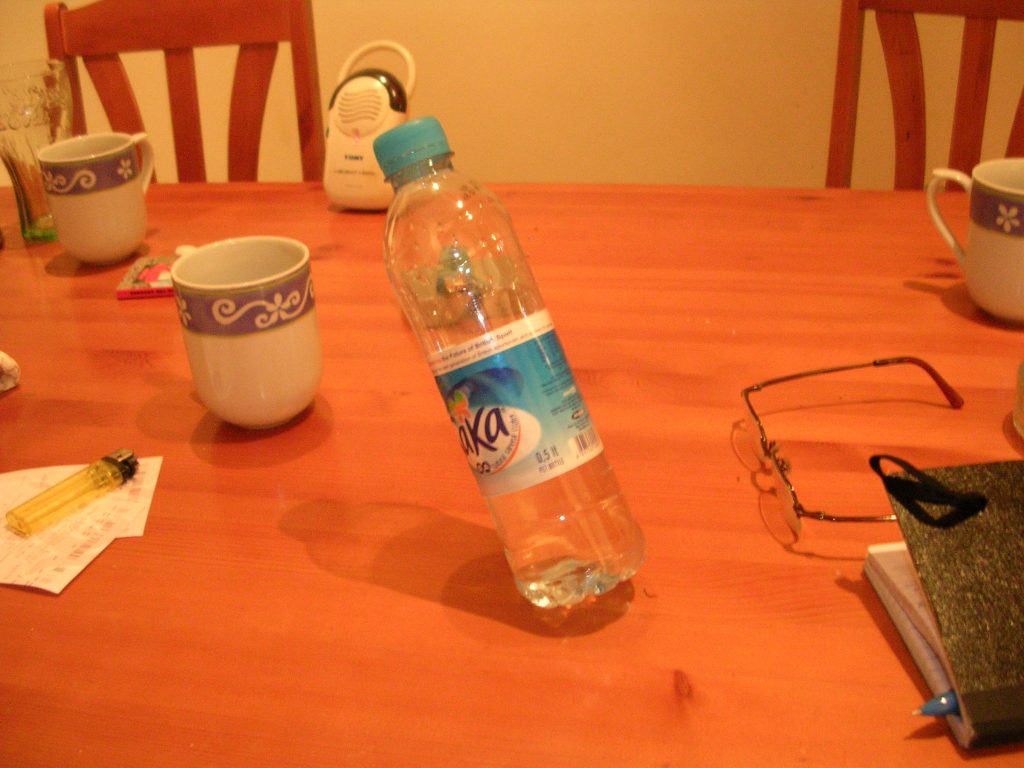
Non parleranno in nessun caso di quello che è successo loro tanti anni fa in quella casetta con due camere da letto a South Shields. La forza di questo caso, ritengo, non è solo in una singola prova, ma in tutto; le numerose fotografie, le ore di riprese video e le numerose testimonianze e dichiarazioni firmate che abbiamo raccolto.
Simone Leoni: Come ci si deve comportare quando si effettua un indagine di questo tipo?
Darren W.Ritson: Ora c’è una domanda! Penso che sarebbe meglio chiedere cosa non si dovrebbe fare durante un’indagine. Penso che ci sia molto da dire qui perché è davvero una questione complicata, soprattutto se vuoi farlo bene! Indagare su un poltergeist è un affare complicato ea volte può essere molto spaventoso, per le vittime e per gli investigatori.
Direi tuttavia, prima di tutto, mettere la famiglia/clienti/vittime e la ricerca seria al primo posto su potenziali guadagni finanziari o notorietà, mantenere la propria integrità e attenersi sempre a un codice etico.
Se non hai integrità o etica… allora non indagare sui casi di poltergeist: non è un gioco. Quando si tratta di un’indagine effettiva, l’obiettivo numero uno è accertare dati validi che possano essere analizzati e appresi.
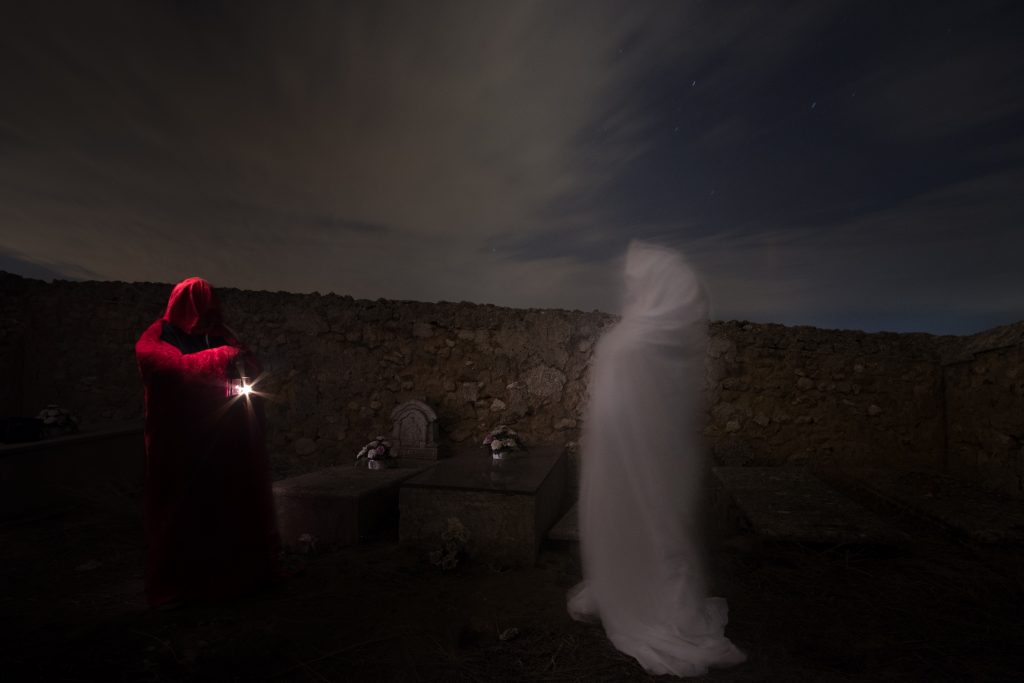
Idealmente i dati raccolti possono aiutare ad andare a provare la realtà del fenomeno e anzi, a imparare qualcosa sulla sua natura… o forse la natura dell’uomo.
Sono stati scritti molti lavori su come indagare sui casi spontanei, ma di gran lunga i migliori, senza dubbio, sono stati scritti da un mio collega chiamato Steven T. Parsons. Ghostology: The Art of the Ghost Hunter (White Crow Books, 2015).
Note di orientamento per investigatori di casi spontanei, apparizioni, fantasmi, poltergeist e fenomeni simili (Society for Psychical Research, 2018), Using Equipment: Guidance Notes for Investigators of Ghosts, Hauntings, Poltergeist e fenomeni simili (Society for Psychical Research, 2021).
Consiglierei sicuramente questi lavori se il lettore dovesse imparare a indagare correttamente.
Simone Leoni: Lei non ha mai investigato sul caso Enfield da quello che ho capito, ma può dirci cosa ne pensa? É un caso autentico o ci sono elementi per dedurre che sia una montatura?
Darren W.Ritson: Conoscevo personalmente Guy Lyon Playfair e abbiamo parlato a lungo dell’Enfield Poltergeist in diverse occasioni e non ho dubbi che “era” un caso autentico.
Sì, i bambini hanno recitato, recitato la parte in occasioni e sono stati presi in giro quando hanno giocato i loro brutti scherzi – Guy e Maurice sono stati sempre onesti e onesti su questo, il che era un merito per loro come investigatori, ma è sempre usato come tentativo per screditare il caso.
Molti altri fenomeni sconcertanti sono stati documentati e testimoniati mentre i bambini erano altrove e ci sono testimonianze e registrazioni più che sufficienti per suggerire che il caso fosse reale.
Teorie passate e presenti.
Simone Leoni: Nel corso degli anni intorno alla figura del Poltergeist, si sono sviluppate teorie molto più affascinanti rispetto a quelle del passato?
Darren W.Ritson: L’idea più recente a venire alla ribalta è in realtà una teoria che è stata sviluppata da Michael J. Hallowell e da me.
Coinvolge due aspetti del poltergeist: uno sono i sorprendenti parallelismi e le notevoli somiglianze che sono stati osservati tra molti casi, e l’altro è un aspetto del poltergeist noto come contagio, in cui gli investigatori, i parenti stretti o gli amici “portano via” il poltergeist in una certa misura, nelle proprie case e sperimentano una lieve attività lontano dalla casa principale infetta dal poltergeist.
Ci sono molti casi documentati di quella che io chiamo “infezione da poltergeist”, quindi se si cerca negli archivi e si esaminano altri casi si trovano esempi di questo… è affascinante.
Un nuovo libro che discute questi due aspetti del poltergeist chiamato Poltergeist Parallels and Contagion (White Crow Books, 2021) è stato recentemente pubblicato e mette in mezzo un’idea “stimolante” sulla natura potenziale del poltergeist.
È stato pubblicato per la prima volta come Contagion: In The Shadow of the South Shields Poltergeist nel 2014. La nuova edizione è stata ampiamente rivista e modificata e promette di suscitare molto dibattito sulla vera natura dei poltergeist.
Simone Leoni: Ci sono aspetti dei Poltergeist poco conosciuti? Ce ne può parlare?
Darren W.Ritson: Sì, è la sua vera natura…..e no, non posso parlarvene perché nessuno sa cosa siano o da dove vengano. Tutto quello che posso dire a livello personale è che sono reali.
Altre persone potrebbero dissentire sulla sua vera natura e affermare di avere le risposte, ma finora, secondo me, non è mai stata prodotta alcuna prova concreta, quindi non possiamo sapere con certezza cosa sia veramente.
In effetti, dimostrare la loro esistenza in primo luogo è un compito abbastanza difficile, non importa spiegare effettivamente cosa sono.
L’aspetto del “contagio” del fenomeno poltergeist potrebbe essere classificato come un “aspetto poco noto”, ma per saperne di più, dovresti consultare il libro: ci sono troppe informazioni da discutere qui.
Simone Leoni: Vuole aggiungere altro?
Darren W.Ritson: No grazie.
A seguire l’intervista in lingua inglese.
Poltergeist: Interview with Darren W. Ritson
How many times have we heard of ghost stories, poltergeists or any other phenomenon related to the world of the paranormal? Surely many times, a little because of the stories handed down to us, a little from the filmography or novels. Are these phenomena real or are they the result of bad jokes?
In some respects, a fascinating phenomenon that I believe I must address here is the phenomenon of the poltergeist, and we will do it with Mr. Darren W. Ritson, researcher and member of the Society For Psychical Research.
Simone Leoni: Mr. Ritson thank you for this interview. Can it be presented to our readers? Who is Darren W. Ritson? And what does it do in life?
Darren W.Ritson: Darren W Ritson is a poltergeist investigator, ghost hunter and author of nearly 20 books on the subject of paranormal phenomena. He is most noted for his 2006 investigation and subsequent book into what has become known in many countries as the South Shields poltergeist.
After experiencing a ‘one off’ poltergeist incident in Dieppe, in France in 1986, where a bedside cabinet threw itself across the room that he was staying in, he decided that the paranormal, but more specifically, poltergeists, was something he wanted to learn about.
Darren is a member of the Society for Psychical Research which was established in 1882, he is now 50 years old, and is a black belt in Judo. His latest book, Poltergeist Parallels and Contagion (White Crow Books, 2021, London) which is a study into the ‘potential’ nature of the poltergeist, has recently been released.
Simone Leoni: You mainly deal with poltergeist phenomena. What does this term mean? And where does it come from?
Darren W.Ritson: The word ‘poltergeist’ is an old German word. Polter, or poltern means to be noisy, knock or generally be boisterous. Geist, means ‘ghost’. Hence noisy ghost.
Although much debate rages about the actual true nature of the poltergeist with some arguing it can be explained as psychic activity known as RSPK (Recurrent spontaneous psychokinesis).
Despite this, the old German word has stuck.
Simone Leoni: Are there any past chronicles, where the poltergeists have acted following a very specific “pattern”?
Darren W.Ritson: Yes, in fact most genuine poltergeists follow ‘patterns’ although not all poltergeists do the same things.
They can generally be identified as poltergeists via these patterns and although cases can vary to a certain degree as no poltergeist is the exactly the same most are pretty standard.
Actually, some poltergeists have been noted in many different cases to display phenomena that is so specific, and so strikingly similar it has been suggested that the same poltergeist may actually be at work as opposed to being ‘many’ poltergeists (Ritson, 2020).
Simone Leoni: There is always one thing that intrigued me. The phenomenon of the poltergeist is said to have a connection with adolescence and the advent of the menstrual cycle. Is there a foundation of truth, or is this a baseless theory?
Darren W.Ritson: Yes, there has long been an association with poltergeists with teens (usually female) and there are many examples of this: Enfield (1977-9), Battersea (1956-1968) Sauchie (1960), Runcorn (1952), Pontefract (1966), Epworth Rectory (1716-7), Rosenheim (1967) Eleonore Zugun (1925) the list goes on……however, it is not always the case that a young female is present during poltergeist outbreaks.
There are indeed documented cases where there have been no child at all in the infected house, leaving investigators puzzled as to who the focus person could be: Cardiff (1989-91), Hertfordshire (1991-96), South Shields (2005-6), The Drummer of Tedworth (1662), However, If it is not a pubescent teen, then its likely that the focal person could be an adult.
This could all depend on his/her emotional/mental state of mind, as it would be of course, in the instance of a youngster.
Although it is a much held belief by many, this is in my opinion still conjecture however, as nothing to date has been ‘set in stone’ with other alternatives and ideas about the nature of the poltergeist being fiercly debated.
With my case at South Shields in 2006, the youngster in the house was only three years old at the time, and ultimately we ruled him out as a ‘focus’.
So, although a lot poltergeists normally follow this ‘young teenager’ rule, it is not always the case. Nothing is straight-forward in poltergeist research.
Simone Leoni: Is there a series of these cases?
Darren W.Ritson: See question 4.
Simone Leoni: How does the poltergeist differ from the classic ghostly manifestations?
Darren W.Ritson: There is a fine line between cases known as ‘poltergeist cases’, and ‘haunt cases’. A lot of the reported phenomena may seem very similar in appearance, but differences can be spotted if you know what to look for.
For starters, poltergeists are usually short lived, lasting from a few weeks to maybe a few months, although there are exceptions to this rule where their duration can exceed a year or two (South Shields, Enfield, Hertfordshire, San Pedro, etc) whereas haunt cases can last for many years, decades, or even centuries.
Physical phenomena reported in haunt cases such as the movement of objects, opening and closing of doors etc can also be noted in poltergeist cases, likewise apparitions that sometimes (but not always) come with poltergeist cases are usually an aspect of ‘haunt cases’.
I guess the way to differentiate between the types of cases is to identify the noted patterns and phenomena types that come with these types of infestations.
Poltergeists seem to follow certain rules/paths/patterns, and if you observe enough of the activity you can determine what type of phenomena you are dealing with. Normally, you can get a good idea of what it may be at the interview stage of the investigation. On site observation then follows giving the investigator an opportunity to either confirm or deny his/her original suspected cause.
Simone Leoni: What positions do you take on these issues? Skeptical or non-skeptical?
Darren W.Ritson: When it comes to the poltergeist phenomenon in general, I am 100% convinced of it’s existence simply because of my involvement at a number of cases I have investigated including the aforementioned South Shields.
What I saw during that case has convinced me beyond all doubt the phenomenon is a real one…..period.
I have no problem saying this.
I am indeed sceptical however, when it comes to claims of having a haunted house, that is until sufficient proof or evidence presents itself to indicate otherwise.
I was sceptical in my approach to the South Shields case and although this case proved to be the one that convinced me the phenomenon is real, we have to be aware that each case is a new one.
A healthy sceptisim is a requirement while investigating these claims, but its fair to say it has to accompany an ‘open mind’ too. Be sceptical of people, not the poltergeist.
Simone Leoni: Is there a particular case that you have investigated and consider it appropriate to tell us?
Darren W.Ritson: Yes, The South Shields Poltergeist (2005-6). I have investigated many remarkable outbreaks of poltergeists but nothing comes close to the South Shields Poltergeist case.
In late 2005 and most part of 2006, in the small coastal town of South Shields in Tyne and Wear, North East England, UK, a rather vicious and intense poltergeist erupted in a small privately owned two bedroomed house.
This poltergeist outbreak, which has subsequently become one of the most familiar cases in recent history, is known as the South Shields Poltergeist and has been recognised in the UK as being one of the most significant cases in the last five decades.
During this outbreak the poltergeist carried out and executed a vast array of mind-blowing phenomena which terrified the homeowners and had myself and my co-investigator (Michael J. Hallowell) wondering just what on earth it was we were dealing with.
Instances of matter through matter penetration were recorded and documented where solid objects pass through other solid objects, eight inch carving knives were thrown about the house by an unseen hand narrowly missing the householders, thunderous raps were heard, coins that seemingly materialised in mid-air rained down on people.
Toys burst into life speaking to us, messages were left for us on ‘doodle boards’, the toilet filled up with a substance that looked like blood, apparitions were seen within the house, furniture moved about on its own, sculptures were created out of tables and chairs, (and cuddly toys and knives), and on occasions it completely overturned the bedrooms leaving them looking like a bomb had hit.
The South Shields Poltergeist book (Ritson, 2020) is dedicated to the entire case and to find out the complete story, it must be consulted.
It is available to purchase on Amazon.
The case is said to be by far one of the best poltergeist cases ever documented and to have been experienced by so many independent witnesses.
In 2008 in the UK, the South Shields case made local and national news. It even made international news as far away as the USA and Australia. It must be noted however, that the family in question remain under a cloak of anonymity and have done so for over fifteen years.
They have not once, since the infestation came to an end, spoken to the media about the case and they have refused all offers of any other media involvement to this day.
They will not under any circumstances talk about what happened to them all those years ago in that little two-bedroomed house in South Shields. The strength of this case I feel, is not just in one singular piece of evidence, but in all of it; the many photographs, the hours of video footage, and the many witness testimonies and signed statements we gathered.
Simone Leoni: What should be done when carrying out such an investigation?
Darren W.Ritson: Now there is a quesion! I think it would be better to ask what should not be done during an investigation.
I think there is way to much to say here as it really is a complicated matter especially if you want to get it right! Investigating a poltergeist is a tricky business and at times it can be very frightening, for the victims, and for investigators.
I would say however, first and foremost put the family/clients/victims and serious research first over potential finaical gain or notoriety, maintain your integrity and always adhere to a code of ethics.
If you don’t have integrity, or ethics….then don’t investigate poltergeist cases – it is not a game. When it comes to actual investigation the number one objective is to ascertain good data that can be analysed and learned from.
Ideally the data gathered may help go to prove the reality of the phenomenon and indeed, learn something about its nature….. or the nature of man, perhaps.
Many works have been written about how to investigate spontaneous cases but by far the best, without question, have been written by a colleague of mine called Steven T. Parsons. Ghostology: The Art of the Ghost Hunter (White Crow Books, 2015).
Guidance Notes for Investigators of Spontaneous Cases, Apparitions, Hauntings, Poltergeists and similar Phenomena (Society for Psychical Research,2018), Using Equipment: Guidance Notes for Investigators of Ghosts, Hauntings, Poltergeists and similar Phenomena (Society for Psychical Research, 2021).
I would certainly recommend these works should the reader with to learn how to investigate properly.
Simone Leoni: You’ve never investigated the Enfield case from what I understand, but can you tell us what you think? is it an authentic case or are there elements to infer that it is a hype?
Darren W.Ritson: I knew Guy Lyon Playfair personally and we talked at length about the Enfield Poltergeist on a number of occassions and I have no doubt in my mind it ‘was’ a genuine case.
Yes, the children played up, acted the part on occassions and were caught out when they played their tricks – Guy and Maurice were always straight up and honest about this which was a credit to them as investigators, but it is always used as an attempt to discredit the case.
Many other bewildering phenomena were documented and witnessed while the children were elsewhere and there is more than enough witness testimony and recordings to suggest that the case was real.
Simone Leoni: Over the years, have much more fascinating theories developed around the figure of the poltergeists than those of the past?
Darren W.Ritson: The most recent idea to come to the fore is actually a theory that was developed by Michael J. Hallowell and myself.
It involves two aspects of the poltergeist – one is the striking parallels and remakable similarities that have been observed between many cases, and the other is an aspect of the poltergeist known as contagion, where investigators, or close family or friends ‘take away’ the poltergeist to a certain extent, to their own homes and experience mild activity away from the main poltergeist infected house.
There are many documented cases of what I call ‘poltergeist infection’ so if one searches the archives and looks into other cases you will find instances of this…its fascinating.
A new book discussing these two aspects of the poltergeist called Poltergeist Parallels and Contagion (White Crow Books, 2021) has recently been released and throws into the mix a ‘thought-provoking’ idea about the potentiqal nature of the poltergeist.
It was first released as Contagion: In The Shadow of the South Shields Poltergeist in 2014. The new edition is hugely revised and edited and promises to cause much debate about the poltergeists true nature.
Simone Leoni: Are there any little-known aspects of poltergeists? Can you tell us about it?
Darren W.Ritson: Yes, its true nature…..and no, I can’t tell you about it because no one knows what they are or where they come from. All I can say on a personal level, is that they are real.
Other folk may beg to differ about its true nature and claim to have the answers but as of yet, in my opinion, no concrete proof has ever been produced so we can not know for certain what it really is.
In fact, proving their existence in the first place is a difficult enough task, never mind actually explaining what they are.
The ‘contagion’ aspect of the poltergeist phenomenon could be classed as a ‘little known aspect’ but to find out much more, you’d have to consult the book – there is far too much information to discuss here.
Simone Leoni: Do you want to add more?
Darren W.Ritson: No, thank you.
